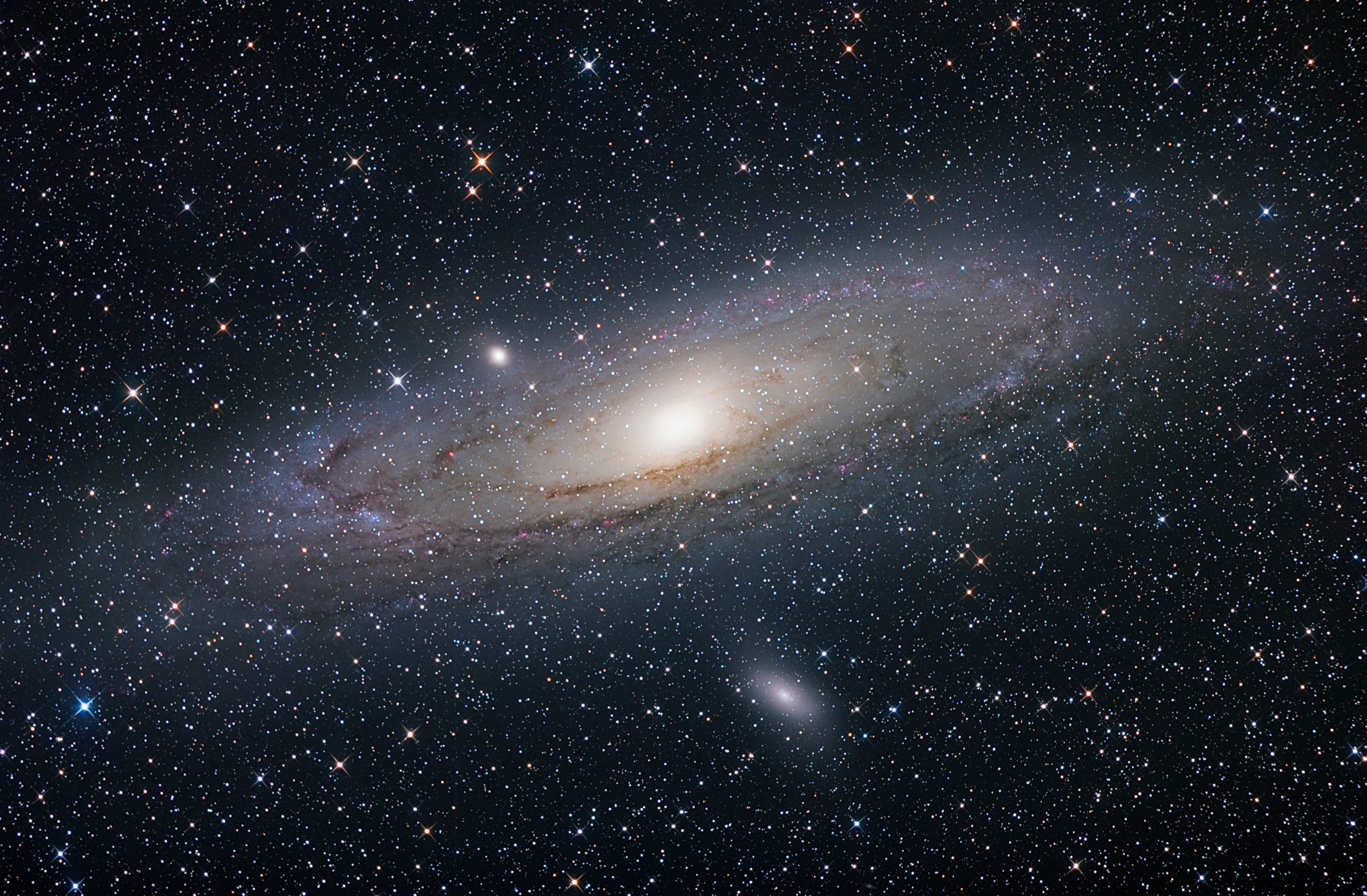
The simple answer is 0 percent. Even under optimal viewing conditions, every individual star you could see belongs to the Milky Way.Here’s why. Assume you’re in the darkest desert on a clear night, and your pupils are fully dilated. With good eyesight, you should be able to see stars as faint as magnitude 7.Meanwhile, the most luminous stars in the universe shine at an absolute visual magnitude of between –10 and –11. (An object’s absolute magnitude is how bright it would appear if it were 10 parsecs [32.6 light-years] away.) Because a star’s brightness falls off as the square of its distance, a star 326 light-years from Earth would be 100 times dimmer – equivalent to five magnitudes – than it would be if it were 32.6 light-years away.How far would you have to be from one of these luminaries to barely detect it? Assuming there is no intervening dust, a magnitude –11 star would appear 18 magnitudes (roughly 16 million times) dimmer if it were at a distance of about 130,000 light-years, or roughly the diameter of our galaxy. All other major galaxies are farther away, so no star within them would be bright enough to see. The only exceptions would be for supernovae – exploding stars that easily outshine their run-of-the-mill cousins – in our Local Group of galaxies. Supernova 1987A in the Large Magellanic Cloud reached 3rd magnitude when it peaked 30 years ago.If you speak in a collective sense, however, the answer changes radically. The combined light of the few hundred billion stars in the Andromeda Galaxy (M31) shines bright enough to see with the naked eye. If you count them along with those in a few other visible nearby galaxies, well more than half the naked-eye stars reside beyond the Milky Way.
Senior Editor









